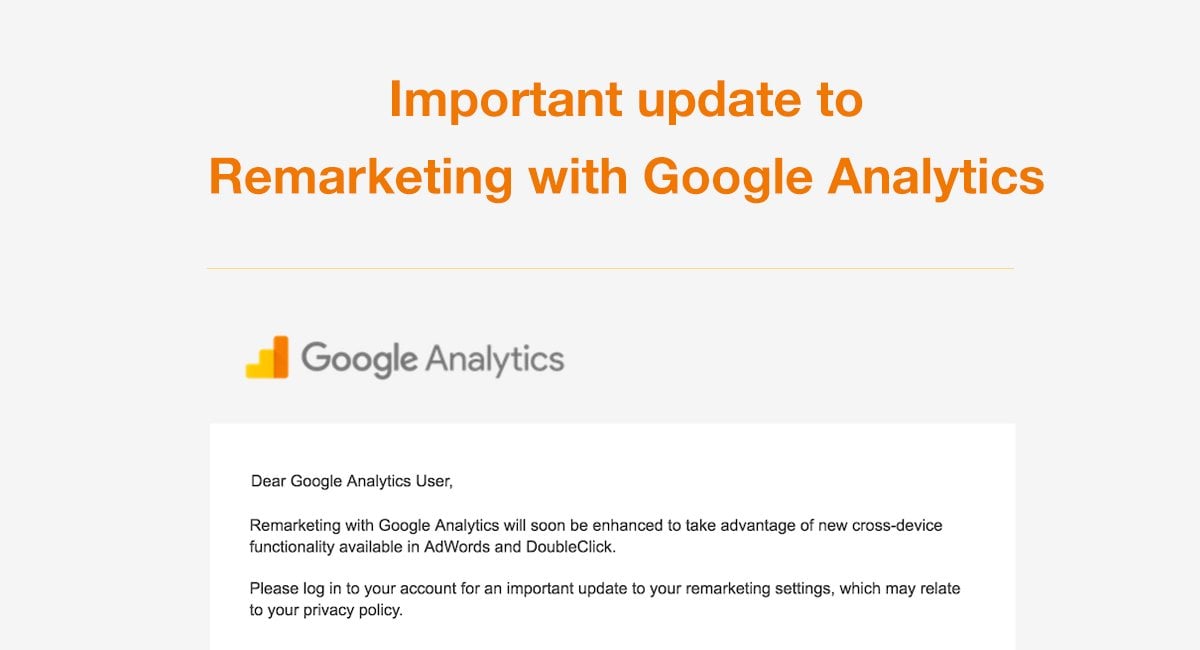The Benefits of Using Remarketing In Google Analytics
The Benefits of Using Remarketing In Google Analytics
Blog Article
Optimize Your ROI With Remarketing in Google Analytics
In the realm of electronic advertising, the use of remarketing techniques within Google Analytics has proven to be a powerful tool for improving return on investment. By taking advantage of the power of customer information and customizing advertisements to particular audience segments, companies can considerably enhance their conversion rates. Nevertheless, the real vital lies in the art of accuracy - understanding individual actions, crafting compelling ads, and constantly refining methods to drive optimal outcomes. The journey to making the most of ROI with remarketing is a nuanced path led with insights and opportunities that can reshape the trajectory of your marketing endeavors.
Recognizing Remarketing in Google Analytics
Recognizing remarketing in Google Analytics is essential for maximizing your digital advertising technique. Remarketing permits you to target users that have formerly seen your site or connected with your app, offering them with customized ads as they browse other sites or make use of other apps within the Google Show Network. This strategy helps keep your brand name top of mind and urges users to return to your website, eventually enhancing the chance of conversion.
By making use of Google Analytics, you can track the efficiency of your remarketing projects, acquiring beneficial understandings into individual habits, engagement, and conversions. This data allows you to improve your messaging, targeting, and bidding approaches to enhance the total effectiveness of your campaigns.
In addition, recognizing the different kinds of remarketing lists offered in Google Analytics, such as standard, dynamic, and comparable target markets, allows you to develop extremely fractional and tailored campaigns tailored to specific individual sections. This level of granularity can dramatically boost the relevance and influence of your remarketing efforts, inevitably maximizing your return on financial investment.
Establishing Remarketing Listings
To properly carry out remarketing projects in Google Analytics, the first step includes producing and setting up remarketing lists targeting details individual sections based on their communications with your website or application. By establishing up remarketing lists, you can customize your advertising initiatives to reach individuals that have currently shown rate of interest in your services or products.
To begin, browse to the Admin section of your Google Analytics account and pick the Residential property where you want to produce the remarketing checklist. Then, under the Property column, click 'Target market Definitions' and choose 'Audiences.' Next off, click on the red 'New Target market' switch and select 'Create New' to define the specifications for your remarketing list.

Crafting Effective Remarketing Advertisements

When crafting your advertisements, focus on producing attention-grabbing headlines and compelling visuals that stick out to possible consumers. Incorporate strong calls-to-action that encourage individuals to review your website and complete a wanted action. Make use of dynamic remarketing to reveal personalized ads including items or services that customers have formerly checked out on your site.
In addition, guarantee that your ads are mobile-friendly considering that a substantial portion of net web traffic originates from mobile gadgets. Examination various ad variants to determine which messages and styles drive the most effective results. By constantly refining and maximizing your remarketing ads based upon efficiency data, you can optimize their performance and boost your return on financial investment.
Studying Remarketing Performance

With Google Analytics, marketers can track the performance of their remarketing campaigns in real-time, enabling them to content identify fads, patterns, and areas for improvement without delay. By analyzing the information, marketers can determine which ads are doing well, which target market sections are reacting positively, and which networks are driving the most conversions. This degree of granularity makes it possible for marketing professionals to make data-driven decisions to maximize their remarketing projects for far better results.
Maximizing ROI With Remarketing
Evaluating remarketing data in Google Analytics makes it possible for marketing professionals to identify chances for maximizing return on financial investment (ROI) via strategic changes - What Is “Remarketing” In Google Analytics?. To optimize ROI with remarketing, it is critical to comprehend the actions of your audience. By assessing customer communications, such as the web pages they went to, the products they checked out, or the activities they took on your website, you can customize your remarketing campaigns extra effectively
Segmenting your target market based on their actions permits you to create customized and targeted ads that are extra likely to resonate with them. By showing pertinent advertisements to details segments of your target market, you can increase the chances of conversion and eventually boost your ROI.
Moreover, testing various advertisement creatives, messaging, and deals can aid determine what resonates finest with your target market. A/B screening allows you to explore different aspects of your advertisements to determine what drives the highest interaction and conversion rates.
Final Thought
To conclude, making best use of ROI with remarketing in Google Analytics requires a calculated strategy to assessing user behavior, segmenting audiences, developing tailored advertisements, and maximizing project efficiency. By leveraging data-driven insights and evaluating various methods, organizations can improve their remarketing efforts to drive greater involvement and conversion rates. This methodical strategy makes sure that sources are successfully assigned in the direction of making best use of rois in remarketing projects.
Next off, click on the red 'New Target market' button and choose 'Develop New' to define the parameters for your remarketing list.
By continuously refining and optimizing your remarketing advertisements based on performance basics information, you can maximize their performance and boost your return on financial investment.
By delving right into these understandings, marketing professionals can obtain a detailed understanding of exactly how their remarketing initiatives are reverberating with their target audience and driving conversions. To take full advantage of ROI with remarketing, it is vital to comprehend the behavior of your audience.In verdict, making best use of ROI with remarketing in Google helpful resources Analytics requires a critical method to analyzing user actions, segmenting audiences, producing tailored advertisements, and maximizing project efficiency.
Report this page